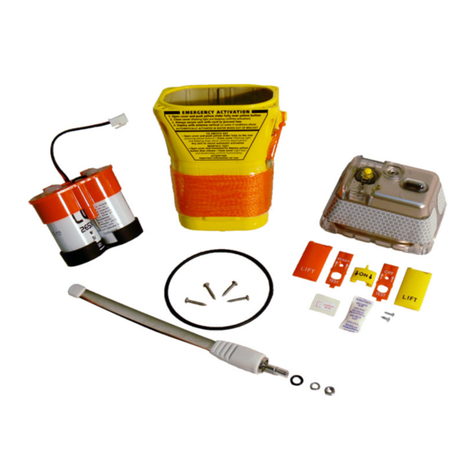
PAGE 10 INSTRUCTION MANUAL 406 MHZ PLB
STANDARD COMMUNICATIONS WARRANTY AGAINST DEFECTS
This warranty against defects is given by Standard
Communications Pty Ltd ACN 000 346 814 (We, us, our
or GME). Our contact details are set out in clause 2.7. This
warranty statement only applies to products purchased in
Australia. Please contact your local GME distributor for
products sold outside of Australia. Local distributor details
at www.gme.net.au/export.
1. Consumer guarantees
1.1 Our goods come with guarantees that cannot be
excluded under the Australian Consumer Law. You
are entitled to a replacement or refund for a major
failure and for compensation for any other reasonably
foreseeable loss or damage. You are also entitled to
have the goods repaired or replaced if the goods fail
to be of acceptable quality and the failure does not
amount to a major failure.
1.2 To the extent we are able, we exclude all other
conditions, warranties and obligations which would
otherwise be implied.
2. Warranty against defects
2.1 This warranty is in addition to and does not limit,
exclude or restrict your rights under the Competition
and Consumer Act 2010 (Australia) or any other
mandatory protection laws that may apply.
2.2 We warrant our goods to be free from defects in
materials and workmanship for the warranty period
(see warranty table) from the date of original sale (or
another period we agree to in writing). Subject to our
obligations under clause 1.2, we will at our option,
either repair or replace goods which we are satisfied
are defective. We warrant any replacement parts for
the remainder of the period of warranty for the goods
into which they are incorporated.
2.3 To the extent permitted by law, our sole liability for
breach of a condition, warranty or other obligation
implied by law is limited
(a) in the case of goods we supply, to any one of the
following as we decide -
(i) the replacement of the goods or the supply
of equivalent goods;
(ii) the repair of the goods;
(iii) the cost of repairing the goods or of
acquiring equivalent goods;
(b) in the case of services we supply, to any one of
the following as we decide –
(i) the supplying of the services again;
(ii) the cost of having the services
supplied again.
2.4 For repairs outside the warranty period, we warrant
our repairs to be free from defects in materials and
workmanship for three months from the date of the
original repair. We agree to re-repair or replace (at our
option) any materials or workmanship which we are
satisfied are defective.
2.5
We warrant that we will perform services with
reasonable care and skill and agree to investigate any
complaint regarding our services made in good faith.
If we are satisfied that the complaint is justified, and
as our sole liability to you under this warranty (to the
extent permitted at law), we agree to supply those
services again at no extra charge to you.
2.6 To make a warranty claim you must before the end
of the applicable warranty period (see warranty
table), at your own cost, return the goods you allege
are defective, provide written details of the defect,
and give us an original or copy of the sales invoice
or some other evidence showing details of the
transaction.
2.7 Send your claim to:
Standard Communications Pty Ltd.
PO Box 96, Winston Hills, NSW 2153, Australia.
Tel: 1300 463 463
Email: servadmin@gme.net.au
2.8 If we determine that your goods are defective, we will
pay for the cost of returning the repaired or replaced
goods to you, and reimburse you for your reasonable
expenses of sending your warranty claim to us.
3. What this warranty does not cover
3.1 This warranty will not apply in relation to:
(a) goods modified or altered in any way;
(b) defects and damage caused by use with non
Standard Communications products;
(c) repairs performed other than by our authorised
representative;
(d) defects or damage resulting from misuse,
accident, impact or neglect;
(e) goods improperly installed or used in a manner
contrary to the relevant instruction manual; or
(f) goods where the serial number has been
removed or made illegal.
4. Warranty period
4.1 We provide the following warranty on GME products.
No repair or replacement during the warranty period
will renew or extend the warranty period past the
period from original date of purchase.
PRODUCT TYPE WARRANTY PERIOD
PLB 7 years





























